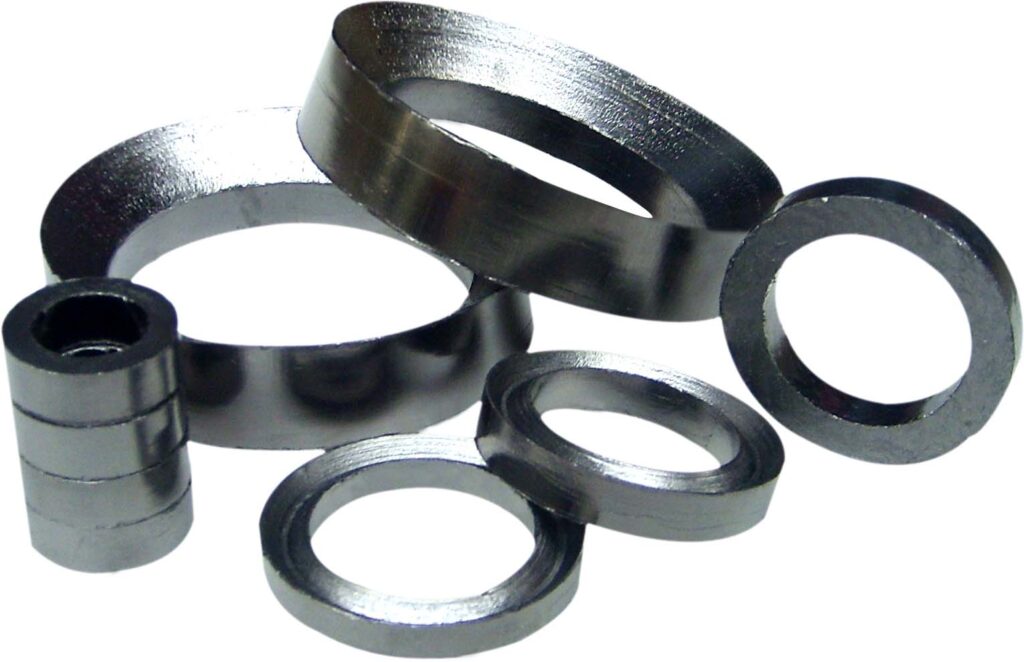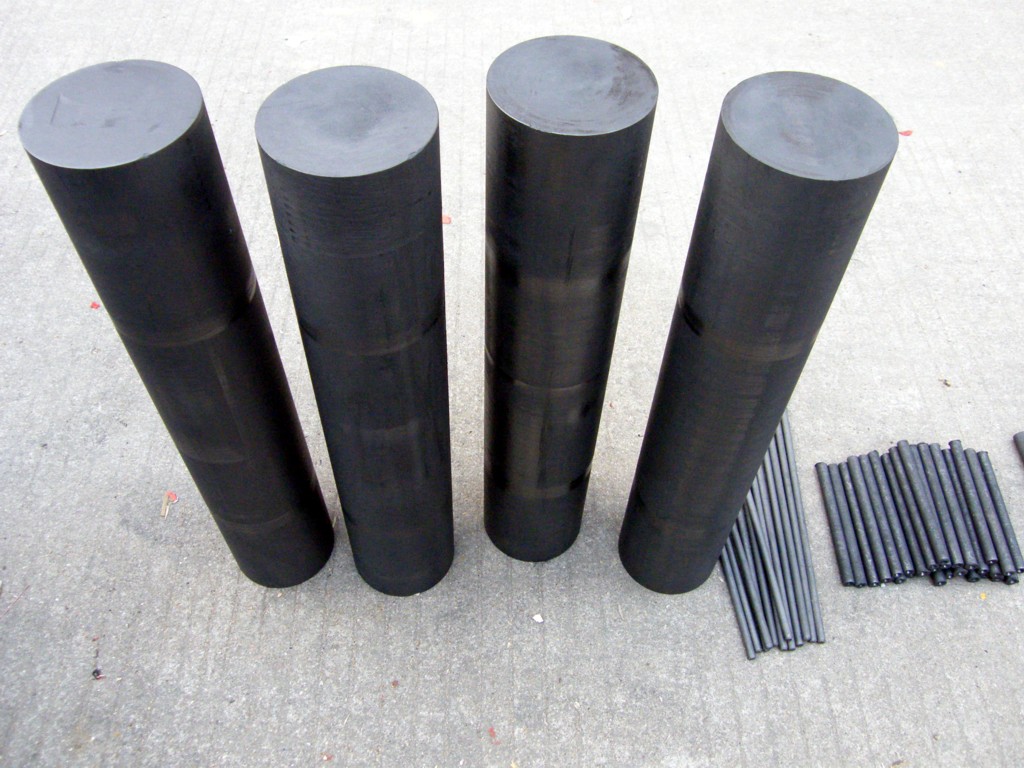The metallurgical industry, which encompasses the extraction, refining, and processing of metals, demands equipment and materials that can withstand extreme conditions. Graphite heating elements have emerged as a crucial component in this industry due to their unique combination of properties. Graphite, an allotrope of carbon, offers excellent thermal conductivity, high – temperature resistance, chemical stability, and electrical conductivity. These properties make graphite heating elements indispensable in various metallurgical processes.
Applications of Graphite Heating Elements in Metallurgy
Metal Melting
Graphite Crucibles
Graphite crucibles are widely used for melting non – ferrous metals such as aluminum, copper, and their alloys, as well as precious metals like gold and silver. These crucibles are made from high – quality graphite materials. The high – temperature resistance of graphite allows it to withstand the extreme heat required to melt these metals. For example, aluminum melts at around 660 °C, and copper at 1085 °C. Graphite crucibles can not only endure these temperatures but also maintain their shape and integrity during the melting process.
The excellent thermal conductivity of graphite ensures that heat is efficiently transferred to the metal inside the crucible, reducing the melting time and energy consumption. Additionally, the chemical stability of graphite prevents any reaction between the crucible and the molten metal, which is crucial for maintaining the purity of the melted metal. In the jewelry industry, for instance, when melting gold to create intricate jewelry designs, the use of graphite crucibles ensures that the gold remains pure, free from any contaminants that could affect its color, malleability, or overall quality.
Electric Arc Furnaces (EAFs)
In the steel – making industry, electric arc furnaces are a vital tool for producing steel from scrap metal. Graphite electrodes in EAFs play a central role in the heating process. As mentioned earlier, when a high – voltage electric current passes through the graphite electrodes, an arc is generated between the electrodes and the scrap metal charge. This arc produces intense heat, which can reach temperatures up to 1600 °C or higher.
The high – temperature resistance and electrical conductivity of graphite make it the ideal material for EAF electrodes. The electrodes need to withstand the extreme heat of the arc and the harsh chemical environment inside the furnace. Over time, as the electrodes are consumed during the arc – heating process, their high – temperature stability ensures a consistent and reliable heat source for melting the scrap metal. The use of graphite electrodes in EAFs has significantly improved the efficiency and flexibility of steel production, allowing for the recycling of large amounts of scrap metal and reducing the industry’s reliance on primary iron ore.
Heat Treatment of Metals
Annealing
Annealing is a heat – treatment process used to relieve internal stresses in metals, improve their ductility, and enhance their machinability. Graphite heating elements are commonly used in annealing furnaces. In this application, the furnace needs to heat the metal to a specific temperature, hold it at that temperature for a certain period, and then cool it slowly.
Graphite heating elements provide the precise and uniform heating required for annealing. Their high thermal conductivity ensures that the furnace chamber reaches the desired annealing temperature quickly and that the temperature is evenly distributed throughout the metal workpiece. For example, in the annealing of steel sheets used in the automotive industry, the uniform heating provided by graphite heating elements helps to eliminate internal stresses caused by cold rolling, making the steel sheets more formable and less likely to crack during subsequent stamping operations.
Quenching
Quenching is another heat – treatment process in which a metal is rapidly cooled after being heated to a high temperature. Graphite heating elements are used to heat the metal to the appropriate quenching temperature. In some cases, graphite – lined furnaces are used to ensure that the metal is heated evenly and to protect the furnace walls from the high – temperature and corrosive effects of the heated metal.
The high – temperature resistance of graphite allows the furnace to reach the temperatures required for quenching, which can be as high as 1000 °C or more for certain steels. After the metal is heated to the desired temperature, it is quickly removed from the furnace and immersed in a quenching medium such as water, oil, or a polymer solution. The precise temperature control provided by graphite heating elements during the heating phase of the quenching process is crucial for achieving the desired mechanical properties in the quenched metal, such as increased hardness and strength.
Tempering
Tempering is a heat – treatment process that follows quenching. It is used to reduce the brittleness of the quenched metal and adjust its hardness and toughness. Graphite heating elements are used in tempering furnaces to heat the quenched metal to a relatively lower temperature, typically between 150 – 650 °C, depending on the type of metal and the desired properties.
The uniform heating provided by graphite heating elements ensures that the entire quenched workpiece is tempered evenly. This is important because uneven tempering can lead to variations in the mechanical properties of the metal, which could cause premature failure in applications where the metal is used. For example, in the production of high – performance cutting tools, proper tempering using graphite – heated furnaces helps to optimize the balance between hardness and toughness, ensuring that the cutting tools can withstand the high forces and temperatures encountered during cutting operations.
Continuous Casting
In continuous casting, molten metal is continuously poured into a mold and solidified into a desired shape, such as a billet, bloom, or slab. Graphite – coated molds or graphite – based components are used in this process. The graphite coating on the mold provides several advantages.
First, graphite has excellent lubricating properties. This reduces the friction between the molten metal and the mold wall as the metal solidifies and moves through the mold. The low friction helps to prevent surface defects on the cast metal product and allows for a smooth and continuous casting process. Second, the high – temperature resistance of graphite enables the mold to withstand the heat of the molten metal without deforming. This is crucial for maintaining the dimensional accuracy of the cast product.
For example, in the continuous casting of steel, graphite – coated molds are used to produce high – quality steel slabs. The graphite coating not only improves the surface finish of the slabs but also contributes to the overall efficiency of the continuous casting process by reducing the need for frequent mold replacements due to wear and tear caused by the high – temperature molten steel.
Conclusion
Graphite heating elements have become an integral part of the metallurgical industry. Their unique properties of high – temperature resistance, thermal conductivity, chemical stability, and electrical conductivity make them essential in various metallurgical processes, from metal melting and heat treatment to continuous casting. As the industry continues to advance, the development and improvement of graphite heating elements will be crucial for achieving more efficient, sustainable, and high – quality metal production. Their widespread use not only enhances the productivity and quality of metallurgical operations but also contributes to the overall competitiveness of the industry in the global market.


